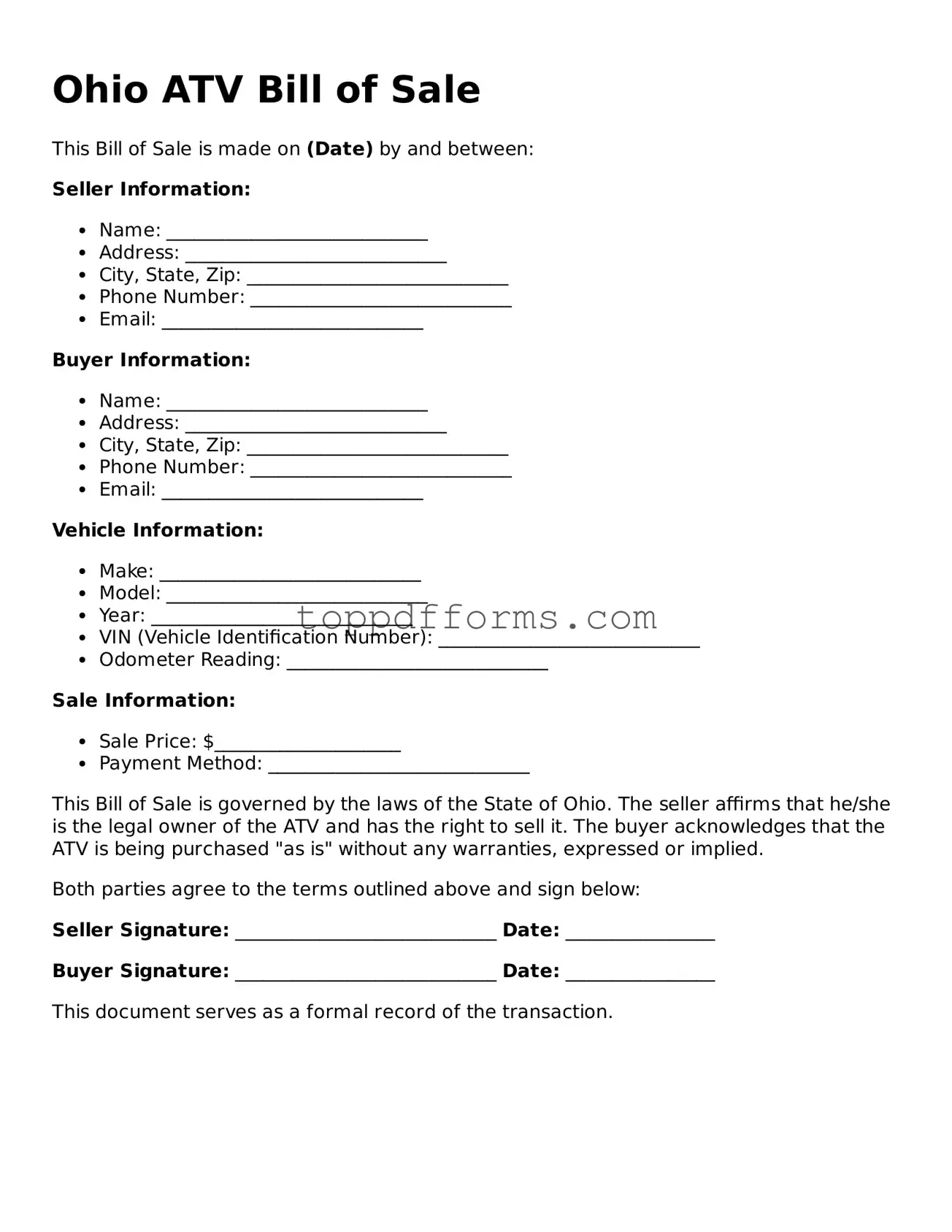What is the Ohio ATV Bill of Sale form?
The Ohio ATV Bill of Sale form is a legal document that records the sale and transfer of ownership of an all-terrain vehicle (ATV) in the state of Ohio. This form provides essential details about the transaction, including the names of the buyer and seller, the description of the ATV, and the sale price. It serves as proof of ownership and can be used for registration purposes with the Ohio Bureau of Motor Vehicles (BMV).
Why is a Bill of Sale important when buying or selling an ATV?
A Bill of Sale is crucial for several reasons. First, it protects both the buyer and seller by documenting the transaction. This can help prevent disputes regarding ownership or payment in the future. Second, it provides the buyer with proof of purchase, which is often required for registration and title transfer. Lastly, having a written record of the sale can simplify the process of reporting theft or loss of the vehicle.
What information is required on the Ohio ATV Bill of Sale form?
The form should include specific details to ensure a complete record of the transaction. Key information includes the full names and addresses of both the buyer and seller, a detailed description of the ATV (including make, model, year, and Vehicle Identification Number), the sale price, and the date of the transaction. Both parties should sign the document to validate the agreement.
Do I need to have the Bill of Sale notarized?
In Ohio, notarization of the Bill of Sale is not a requirement for it to be valid. However, having the document notarized can provide an extra layer of authenticity and can be beneficial if any disputes arise later. It’s advisable to check with local authorities or the BMV for any specific requirements that may apply to your situation.
Can I use a generic Bill of Sale for my ATV transaction?
While you can use a generic Bill of Sale, it is recommended to use the specific Ohio ATV Bill of Sale form. This form is designed to meet the requirements of Ohio law and includes all necessary fields tailored to ATV transactions. Using the correct form helps ensure that all legal aspects are covered and can facilitate a smoother registration process.
